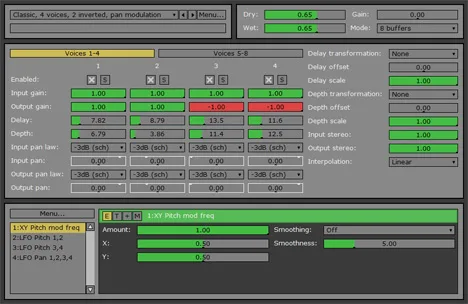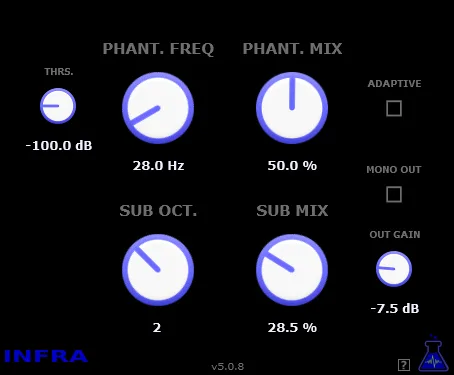In the world of music production, there is a multitude of tools that help shape a unique sound. Among them, modulation effects hold a special place, adding movement, depth, and space. And while chorus is one of the classic effects that simulates the sound of several instruments or voices playing in unison with slight variations in pitch and time, some plugins take its capabilities to a whole new level.
JBR Chorus: The Versatility of Chorus
JBR Chorus by JBR Plugins is just such a plugin. It doesn’t just reproduce the standard chorus effect, but offers an advanced set of features that allows you to create extremely rich and complex modulation textures. Created for Windows platforms (Win32 and Win64) in VST format, this plugin will quickly become an indispensable tool in your arsenal, whether you’re working on mixing vocals, guitars, synthesizers, or any other instruments that need volume and movement.
Architecture and Number of Voices
The heart of JBR Chorus is its architecture with support for up to 8 independent voices. This is significantly more than most standard chorus plugins offer. Each of these voices is completely autonomous and has its own parameters, which include:
- Independent delay (Delay)
- Modulation depth (Depth)
- Gain level (Gain)
- Panning (Pan)
- And other options
This level of control over each individual voice opens up endless possibilities for experimentation. You can create both classic, transparent choruses and extreme, psychedelic effects, distributing the voices in stereo space and giving each one a unique character.
Delay Flexibility
The delay range in JBR Chorus ranges from 0 ms to 100 ms. This wide range allows you to implement not only typical short delays, characteristic of chorus, but also longer ones, which can bring the effect closer to a flanger or even a short delay. The ability to precisely adjust the delay for each voice individually is key to forming a unique spatial and timbral effect.
Modulation Power
One of the most remarkable features of JBR Chorus is its almost unlimited modulation capabilities. The plugin supports up to 50 modulators, each of which can affect up to 50 targets. This means you can modulate virtually any continuously variable parameter in the plugin, creating extremely dynamic and lively effects.
Built-in low-frequency oscillators (LFOs) offer a variety of waveforms, including sine, triangle, sawtooth, and others. This allows you to determine the nature of the modulation movement – from smooth, organic oscillations to sharp, rhythmic changes. Such a deep integration of the modulation system takes JBR Chorus far beyond the ordinary chorus, turning it into a real tool for sound design.
Sound Quality and Performance
JBR Chorus also pays attention to sound quality, offering a choice between linear and cubic interpolation of the delay line. Cubic interpolation generally provides a smoother and cleaner sound, minimizing unwanted artifacts that can occur during rapid delay changes.
An important aspect is also the smooth changing of parameters. Thanks to the adjustable smoothness, you can avoid jumps and clicks when automating or manually adjusting parameters, ensuring a professional sound even with active use of the plugin.
Despite its functionality, JBR Chorus is characterized by low CPU consumption. This allows you to use several instances of the plugin in large projects without a significant load on the system, which is critically important for modern studio work.
Conclusion
JBR Chorus by JBR Plugins is not just a chorus, it is a powerful tool for creating complex and unique modulation effects. With its 8 independent voices, flexible delay settings, almost unlimited modulation capabilities through the LFO and target system, high-quality interpolation and low CPU load, it offers musicians and sound engineers unprecedented control over space and movement in their mixes. If you are looking for a chorus that goes beyond the ordinary and offers room for creativity, JBR Chorus is definitely worth your attention.



